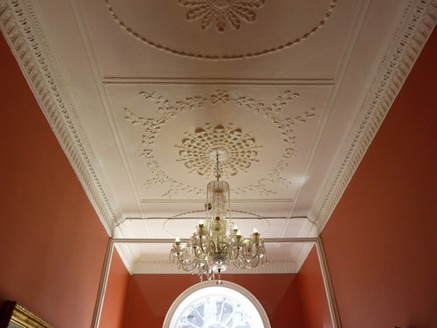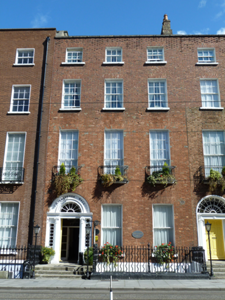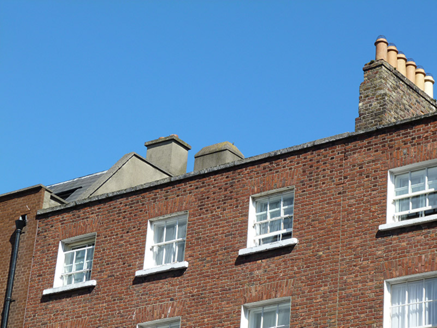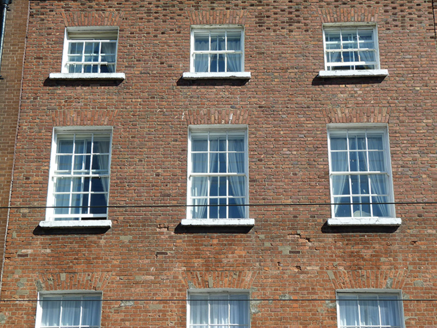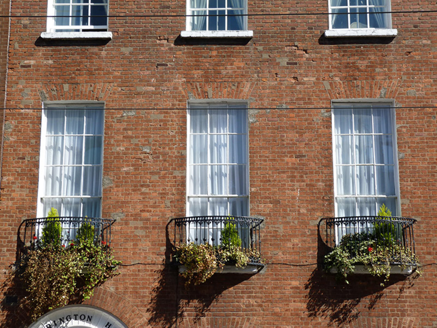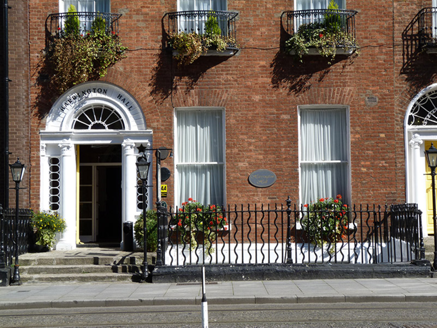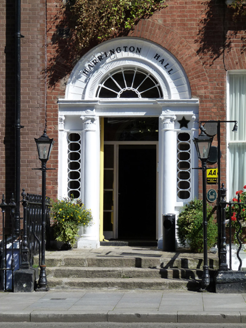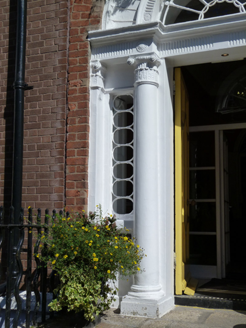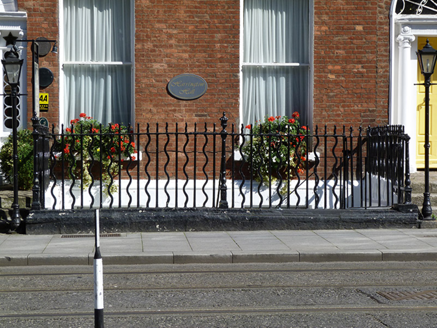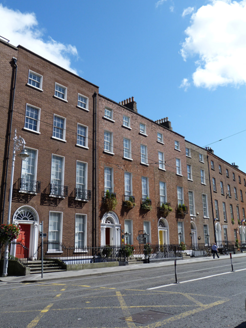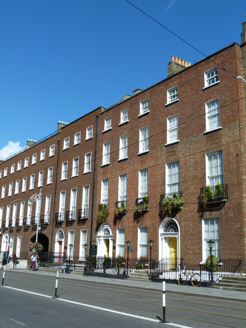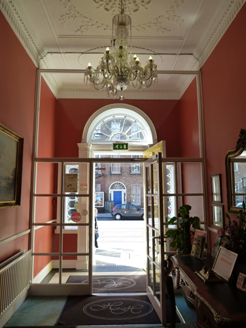Survey Data
Reg No
50920249
Rating
Regional
Categories of Special Interest
Architectural, Artistic, Social
Original Use
House
In Use As
Hotel
Date
1790 - 1810
Coordinates
315761, 233022
Date Recorded
27/08/2015
Date Updated
--/--/--
Description
Terraced double-pile three-bay four-storey over basement former townhouse, built c. 1800, with two-storey return to rear (east) elevation. Now in use as hotel. M-profile pitched roof, hipped to rear span, hidden behind refaced brick parapet with granite coping, brick chimneystacks with yellow clay pots to south party wall and rendered chimneystack to north. Concealed rainwater goods, cast-iron downpipes to rear. Red brick walls laid in Flemish bond, refaced on upper floors, over masonry plinth course; rendered walls to basement of front (west) elevation and throughout rear (east) elevation. Square-headed window openings with brick voussoirs, masonry sills, rendered reveals and bowed decorative cast-iron balconettes to first floor openings. Rendered surrounds to basement openings. Nine-over-six pane sliding timber sashes to first floor; remainder have horns with one-over-one to ground floor, six-over-six to second floor and three-over-three to third floor. Some recent casements to rear, round-headed multi-paned sash without horns to north-bay. Round-headed door opening having brick voussoirs, engaged Ionic columns and respond pilasters supporting fluted frieze with paterae and cornice, spoked fanlight with fluted surround and ribbed coving with raised lettering ‘HARRINGTON HALL’. Columns flanked by recessed sidelights having decorative oval ironwork and timber panelled door. Granite entrance platform and granite steps to street, flanking cast-iron lamps standards and by mild-steel railings on painted granite plinth with decorative cast-iron corner posts, enclosing basement well to south. Decorative plasterwork cornice and ceiling to entrance hall. Street-fronted, located on east side of Harcourt Street.
Appraisal
Though altered for use as a hotel, this former townhouse positively contributes to the historic character of the street, which is dominated by late-Georgian and early-Victorian townhouses. The restrained façade is enriched with balconettes and most notably, a Neo-classical doorcase featuring a decorative fanlight embellished by ribbed coving and further complemented by decorative sidelights. The doorcase glazing allows additional light into the entrance hall, highlighting the delicate plasterwork ceiling. Harcourt Street was opened 1777 by John Hatch, barrister and Seneschal of the Manor of St. Sepulchre. Development was sporadic until the late 1790s when Messrs Hatch, Wade and Whitten obtained approval from the Wide Street Commissioners for the further development of the street.
